#1 Lincoln Cent (Modern) Buyer Las Vegas & Henderson
History of Lincoln Small Cents
Lincoln Memorial Cent 1959 to 2008
In 1959 marked the 150th anniversary of Abraham Lincoln’s birth, and the 50th anniversary of the Lincoln cent. The U.S. The Mint celebrated these events by giving the cent a new reverse design depicting the Lincoln Memorial. The reverse was designed by Frank Gasparro, an assistant mint engraver at the time, who later became the Mint’s Chief Engraver.
On Sunday morning, December 21, 1958, President Eisenhower issued a press release announcing that a new reverse design for the cent would begin production on January 2, 1959. The redesign came as a complete surprise, as word of the proposal had not been leaked. The coin was officially released on February 12, 1959, the 150th anniversary of Lincoln’s birth.
From 1959 until 1982 pennies were composed of 95% copper and 5% tin and zinc. However, the price of copper began rising, so the United States Treasury decided to change the composition of the Lincoln cent because the price of copper had simply gotten too expensive.
Copper prices began to rise in 1973, to such an extent that the intrinsic value of the coin approached a cent, and citizens began to hoard cents, hoping to realize a profit. The Mint decided to switch to an aluminum cent. Over a million and a half such pieces were struck in the second half of 1973, though they were dated 1974. At congressional hearings, representatives of the vending machine industry testified that aluminum cents would jam their equipment, and the Mint backed away from its proposal. These 1974 aluminum experimental pieces were almost all melted, but some have found their way to private hands. Samples of the aluminum cents had been distributed to members of Congress, but 14 remained missing, with the recipients claiming to not knowing what had happened to them. One aluminum cent was donated to the Smithsonian Institution for the National Numismatic Collection.
In 1982 the price of copper dictated a change in the composition of the Lincoln penny. Because of rising copper prices, the U.S. Treasury authorized the usage of a copper-plated zinc as the composition for the one-cent coin. The mint struck approximately half the 1982 pennies from the copper alloy. The rest were made with a copper plating over a zinc core with a copper composition of only 2.5%. This resulted in some 1982 pennies being made of copper and others being struck with a zinc core. All U.S. pennies made for circulation since 1983 contain a zinc core covered with a thin plating of copper.
Lincoln Bicentennial Cent 2009
In 2009, the United States Mint issued four different pennies in recognition not only of the 200th anniversary of Abraham Lincoln’s birth, but also the 100th anniversary of the Lincoln cent, first appearing in 1909. The themes on the reverses represent the four major aspects of Lincoln’s life:
- Birth and Early Childhood in Kentucky (1809-1816)
- Formative Years in Indiana (1816-1830)
- Professional Life in Illinois (1830-1861)
- Presidency in Washington, D.C. (1861-1865)
The circulating version of these coins uses the same metal content as other modern cents (2.5 percent copper, the rest zinc). The uncirculated version contains the metals used in the original 1909 cent (95 percent copper, 5 percent tin and zinc).
After the 2009 Lincoln Bicentennial One Cent Program ended, the design on the back of the one-cent coin was changed to represent the unity of the states, which President Lincoln worked so hard to restore and preserve.
Lincoln Shield Cent 2010 to Today
The Lincoln Shield Cent was issued following the four different designs issued for the 2009 Lincoln Bicentennial Cent to celebrate Lincoln’s birth. The same legislation that authorized the four reverse designs, also specified a fifth design to be issued in the following year, 2010, which would be emblematic of Lincoln’s preservation of the United States of America as a single and united country.
Initially, 18 designs were submitted to the Commission of Fine Arts and the Citizens Coinage Advisory Committee. Both organizations submitted their recommended designs to US Treasury Secretary Timothy Geitner, who selected the Union shield design. Lyndall Bass, an associate designer with the US Mint created the design, and Joseph F. Menna was the design sculptor. In 2010, a new permanent reverse design featuring a Union shield was placed on all Lincoln cents was released on February 11, 2010, one day before the 201st anniversary of Lincoln’s birth.
The “Preservation of the Union” reverse design is emblematic of President Abraham Lincoln’s preservation of the United States as a single and united country. The design selected features the Union Shield, which dates back to the 1780’s and was used widely during the Civil War. The shield includes thirteen vertical stripes joined by an upper horizontal bar. This represents the thirteen original states joined together in a single compact union in support of the federal government. The design includes the inscriptions “United States of America” around the top of the coin, “E Pluribus Unum” (Out of Many, One) on the header at the top of the shield, and “One Cent” within a scroll draped across the shield. The obverse continues to bear the Lincoln portrait that has appeared on the coin since 1909.
In early January 2017, cents bearing the current date and with the mint mark “P” appeared in circulation. The Mint had made no announcement of such coins, but confirmed their authenticity, stating that the coins had the mint mark to honor the Mint’s 225th anniversary. 2017 is the only year that Philadelphia cents have had a mintmark, cents struck in 2018 and after omit the “P” mintmark.
What Is A Lincoln Small Cent
There have been three variations of Lincoln small cent started from 1959 up to date. These are:
- Lincoln Memorial Cent 1959 to 2008 – The obverse was designed by Victor D. Brenner and the reverse was designed by Frank Gasparro. The obverse bears the same design with the previous Lincoln Wheat small cents. It features a bust of Abraham Lincoln facing to the right. The motto “IN GOD WE TRUST” appears above the portrait near the raised rim. The word LIBERTY is inscribed to the left and the date it was minted together with the mint mark to the right. While the reverse design features the Lincoln Memorial in Washington D.C. If you look closely you can see Abraham Lincoln sitting inside the memorial. The word UNITED STATES OF AMERICA is inscribed in a semi-circle fashion on top of the Lincoln Memorial near the rim. The denomination ONE CENT is struck below in a sem-circle fashion way too.
- Lincoln Bicentennial Cent 2009 – The year 2009 was not only the 200th anniversary of Abraham Lincoln’s birth, but also the 100th anniversary of the Lincoln cent, first appearing in 1909. The Lincoln image remained on the obverse of all four cents in the new program. On the reverse, four different images highlighted four parts of Lincoln’s life. These coins were issued about three months apart in the order they happened. These four different designs are: Birth and Early Childhood in Kentucky, Formative Years in Indiana, Professional Life in Illinois, and Presidency in Washington, DC.
- Lincoln Shield Cent 2010 to Today – This was designed by Lyndall Bass, an associate designer with the US Mint, and Joseph F. Menna was the design sculptor. The obverse still continues to bear the Lincoln portrait that has appeared on the coin since 1909. The new permanent reverse design featuring a Union shield was placed on all Lincoln cents was released on February 11, 2010, one day before the 201st anniversary of Lincoln’s birth. The “Preservation of the Union” reverse design is emblematic of President Abraham Lincoln’s preservation of the United States as a single and united country. The design selected features the Union Shield, which dates back to the 1780’s and was used widely during the Civil War. The shield includes thirteen vertical stripes joined by an upper horizontal bar. This represents the thirteen original states joined together in a single compact union in support of the federal government. The design includes the inscriptions “United States of America” around the top of the coin, “E Pluribus Unum” (Out of Many, One) on the header at the top of the shield, and “One Cent” within a scroll draped across the shield.
Composition and Specifications of Lincoln Small Cents
Lincoln small cents from 1959 until 1982 pennies were composed of 95 percent copper and 5 percent tin and zinc with a diameter of 19 mm and a weight of 3.11 grams. In 1982 the price of copper dictated a change in the composition of the Lincoln penny. The mint made approximately half the pennies minted in 1982 from the mostly copper alloy. The rest of them were made with a copper plating over a zinc core (core: 99.2 percent zinc, 0.8 percent copper; plating: 100 percent copper).
For the special Bicentennial Lincoln Cents released in 2009, the United States Mint released collector versions of the coin struck in the original composition of 95% copper and 5% tin and zinc. These coins were included in the annual proof and mint sets, as well as the Lincoln Coin and Chronicles Set.
These are the three conditional factors that determine the value of a Draped Bust Large Cent coins and they are: Red (RD), RB (Red-Brown), BN (Brown). A RD coin is going to have at least 90% original luster as struck by the mint and is the most valuable condition. The luster conditions only apply to mint state coins so any circulated coin will be designated BN.
- Bronze Lincoln Cents:
Dates: 1909-1942, 1947-1962, 2009
Composition: 95% copper, 5% tin and zinc
Weight: 3.11 grams
Diameter: 19 mm
- Zinc Coated Steel Lincoln Cents:
Date: 1943
Composition: steel coated with zinc
Weight: 2.70 grams
Diameter: 19 mm
- Copper Lincoln Cents:
Dates: 1944-1946, 1962-1982
Composition: 95% copper, 5% zinc
Weight: 3.11 grams
Diameter: 19 mm
How We Grade Lincoln Small Cents
These are the different grades of Lincoln Small Cent:
- Uncirculated: These are the coins that never made it out onto the open market. They normally have a brand new look or same as how it looked like when it was first minted way back in 1959 to today’s.
- Extremely Fine: These coins look the same as uncirculated but it has few minor scratches and chips. These imperfections are noticeable but nothing so large that it will detract from the appearance of the coin.
- Fine: These coins were likely been circulated for over a long period of time. They have scratches and chips but the letters and numbers on the surface image can still be seen by the naked eye.
- Good: These are the coins that have been heavily circulated and damaged. The letters and numbers worn away due to deep scratching and smoothing. Most good graded coins are in the worst condition.
We prefer coins that have been graded and certified as authentic by Professional Coin Grading Service (PCGS) or Numismatic Guaranty Corporation (NGC), though we will still give a fair deal for these coins.
Price Quote for Modern Lincoln Small Cent
We have different estimated prices for these years of production of Lincoln small cents from Lincoln Memorial cents up to today’s Lincoln Cents. Only key dates have different estimated prices, and these key dates are: 1970 – S small date, 1972, 1983, 1984, and 1995. The rest of the years bear the same estimated prices.
For 1970-S small date Lincoln small cents, the price for Good graded coins reach up to $5; for the Fine graded coins, it can reach up to $10; while the Extremely Fine graded coins reach up to $20; and for the Uncirculated graded coins, it can reach up to $27.
For the 1972 Lincoln small cents price for Good graded coins reaches up to $150; for the Fine graded coins, the prices can reach up to $220; while the price for Extremely Fine graded coins can range up to $240; and the Uncirculated graded coins reaches up to $340.
The 1983 Lincoln small cents, the price for Good graded coins can reach up to $20; for the Fine graded coins, it can reach up to $50; while the Extremely Fine graded coins reaches up to $120; and for the Uncirculated graded coins, it can reach up to $170.
While the 1984 Lincoln small cents, the price for Good graded coins can reach up to $10; for the Fine graded coins, it can reach up to $30; while the Extremely Fine graded coins reaches up to $70; and for the Uncirculated graded coins, it can reach up to $110.
And the 1995 Lincoln small cent, the price for Good graded coins can reach up to $2; for the Fine graded coins, it can reach up to $5; while the Extremely Fine graded coins reaches up to $20; and for the Uncirculated graded coins, it can reach up to $30.
For the 1959 to 2017 Lincoln small cents, the price for Good graded coins can reach up to $0.10; for the Fine graded coins, it can reach up to $0.20; while the Extremely Fine graded coins reaches up to $1.70; and for the Uncirculated graded coins, it can reach up to $2.50.
Uncirculated coins price higher than the other grades because it has never been used or circulated in the open market, and it looks brand new with no imperfections or scratches.
As you can see, we buy 1959 to today’s Lincoln small cents. We will buy your coins no matter the grade and the condition. So, if you have Lincoln small cent coins, sell it to us and we will give you a good deal for your coins. Contact us now!




































